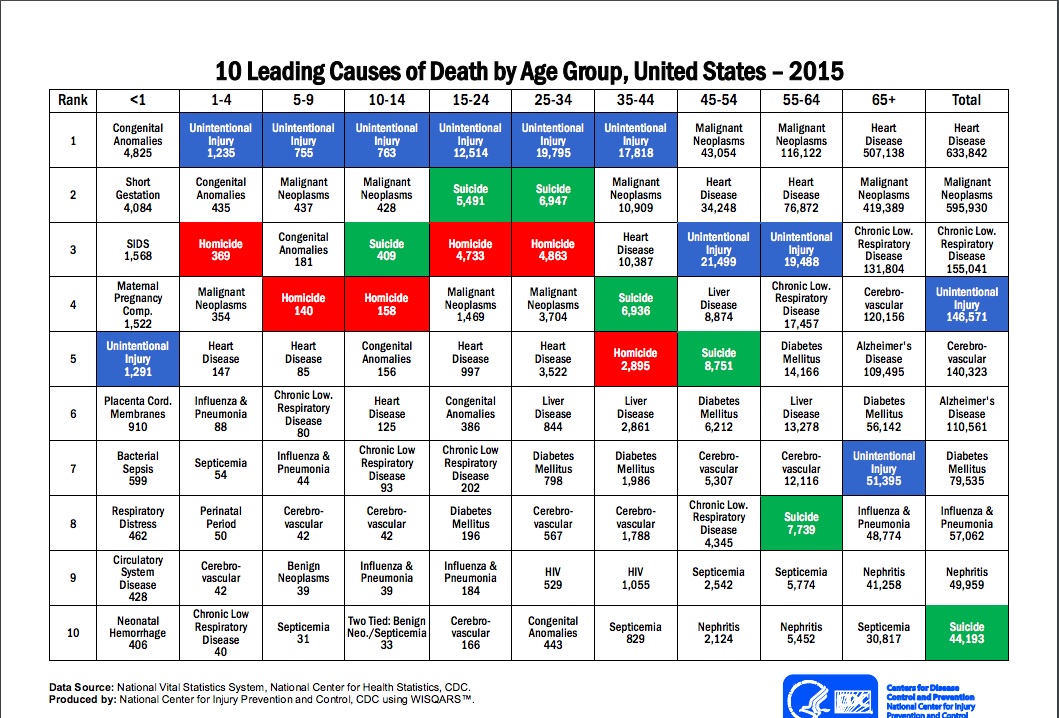When it comes the debate around to gun violence, we’re bombarded by tragedies like Columbine, Sandy Hook, San Bernardino, the list goes on. But framing the issue around mass shootings misses a crucial point: guns are not only being used to kill other people. Overwhelmingly, they’re being used by people ending their own lives.

In almost every age group, suicide outnumbers homicide as a leading cause of death.
Thanks to the 1996 Dickey Amendment, federal funds cannot be allocated to study gun violence. We’ve taken up the cause with our project, which examines firearms policies across the country, but as is often the case, the law allows for a striking lack of consistency in the data states retain. Although it’s difficult to understand the pervasiveness of the issue, some states have provided us ample data on suicide statistics, shedding light on an often overlooked realm of gun violence.
The Massachusetts 2013 Suicide Report, released to us by the Massachusetts Department of Public Health, shows that gunshots are the second most frequent cause of suicide in the state, accounting for about 20 percent of that year’s suicides.

Alaska has a similarly tragic story. Their State Epidemiology Bulletin on violent deaths from 2012-2015 shows suicide as the leader - 3.6 times higher than homicide.

Although this state doesn’t break it down as neatly as Massachusetts, it does say that 61 percent of violent deaths involved a firearm. Of the 998 total violent deaths, the four year period saw 707 suicides. In comparison, there were 194 homicides/legal interventions.


These two states are small pieces of a much broader picture. According to the CDC’s Multiple Cause of Death database, shown as an infographic on firethirtyeight, almost two-thirds of all gun deaths in the country are suicides.

When asking for reports on gun-related deaths, some states, like Iowa, only provided information on homicides. But the prevalence of gun violence isn’t just an issue of people shooting each other - self-harm is a critical omission from the debate, and an ironic one when you consider the data pointing to its frequency.
Especially in the framework of suicide, firearms are more of a public health issue and less of a second amendment debate. The law prohibits us from understanding the full scope of gun violence by allowing a lack of consistent data, and this is aiding a mental health crisis by allowing an easy means for someone to tragically end their own life.
Suicide needs to be mentioned alongside homicide in discussions on gun violence. Guns are not only being used to kill other people - far too often, they’re being used by people ending their own lives.
Read Massachusett’s report on suicide data is embedded below, or on the request page.
Image via Shaw Air Force Base




